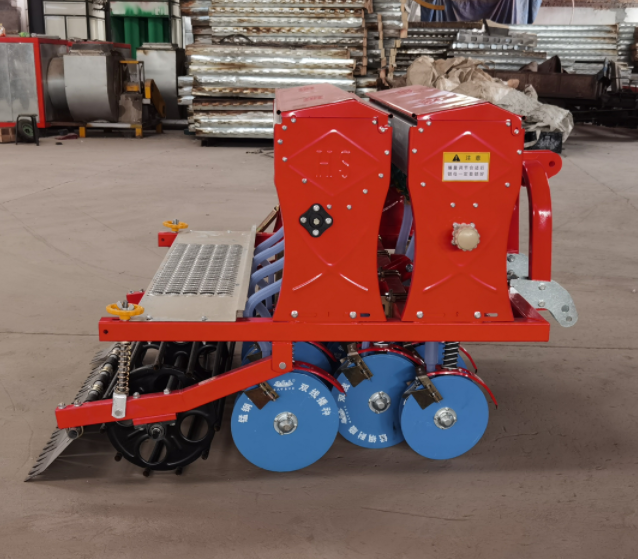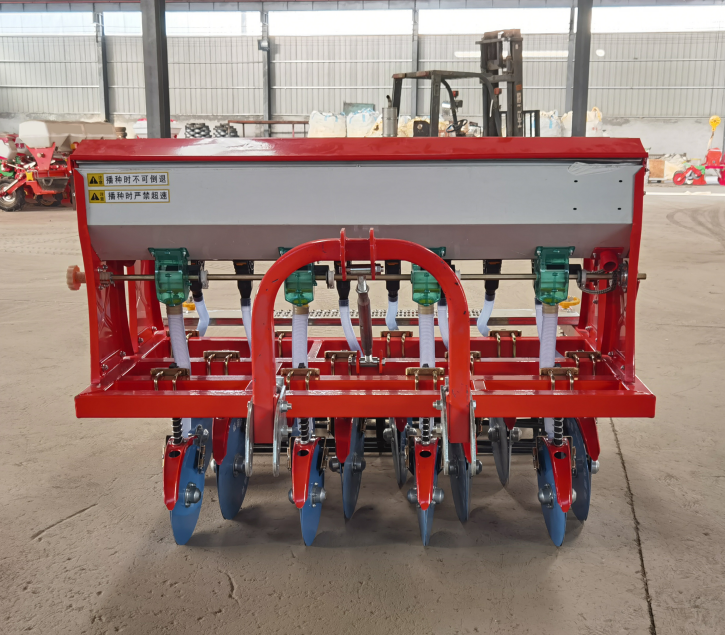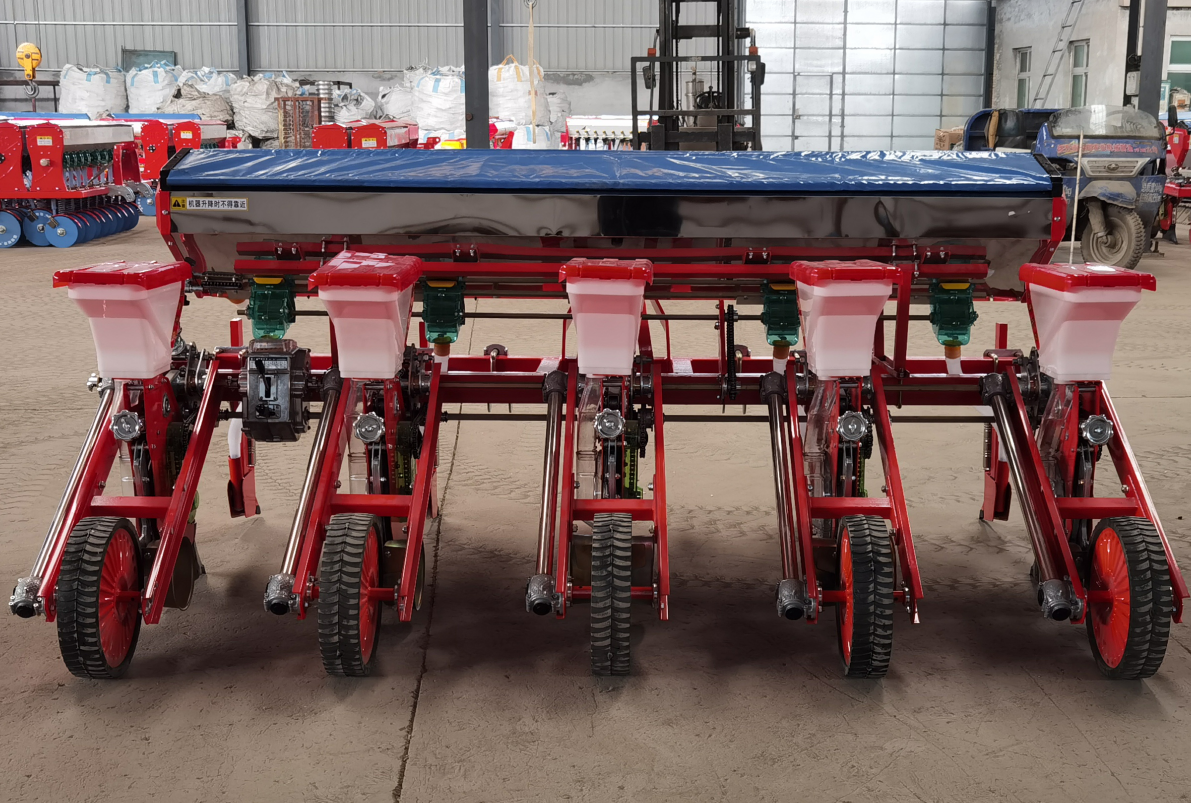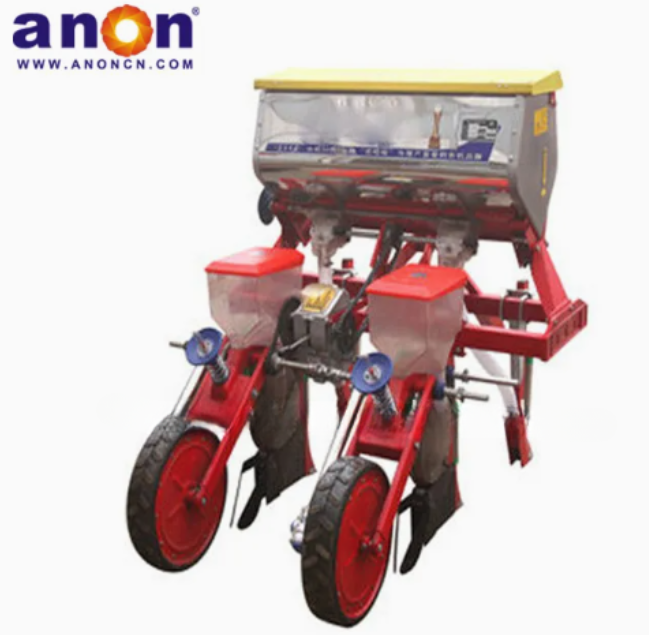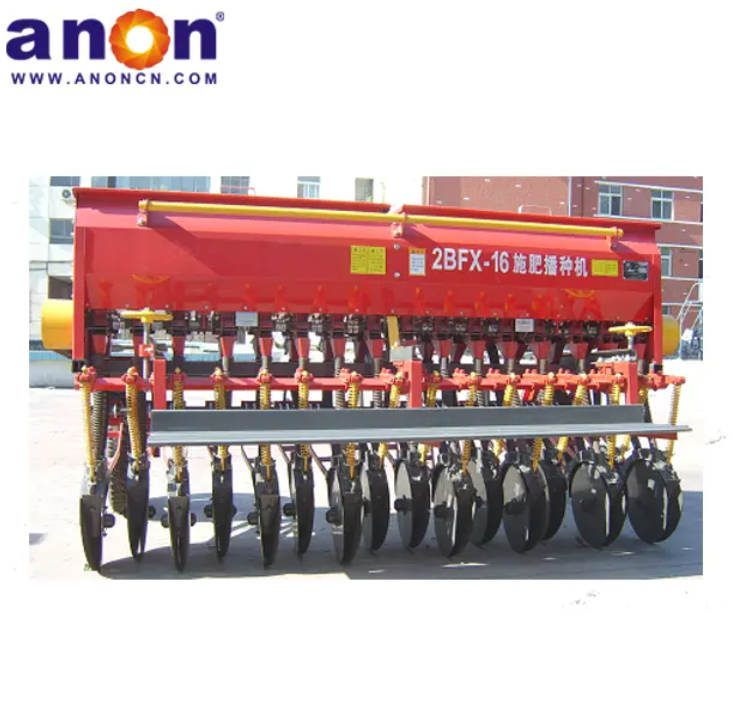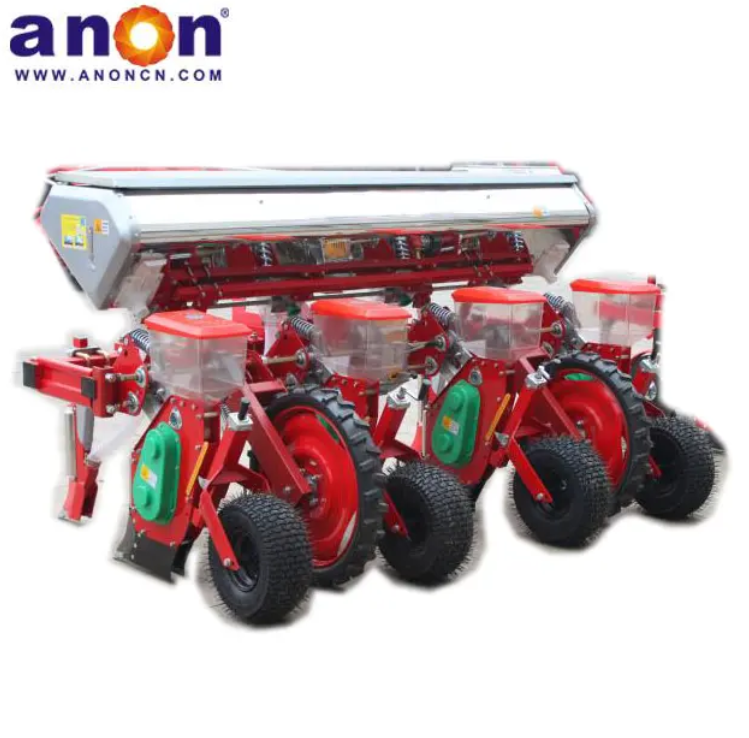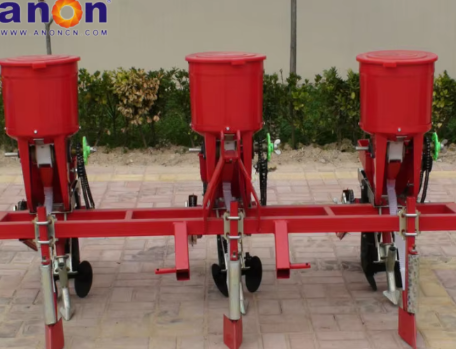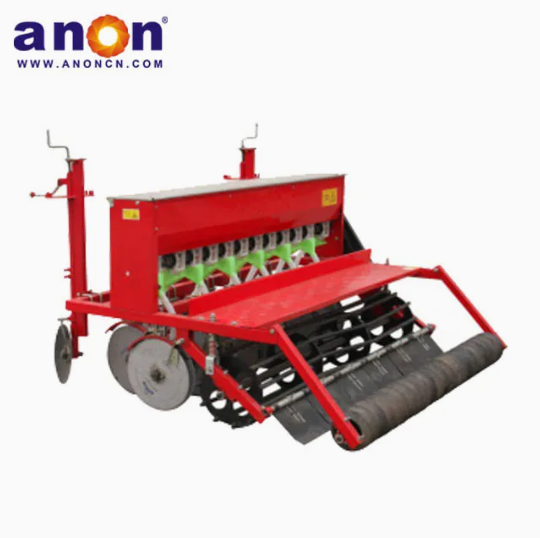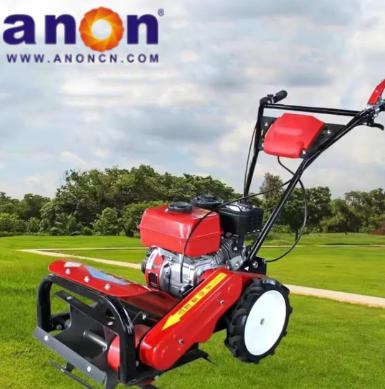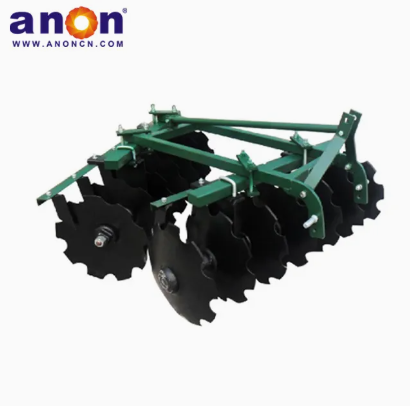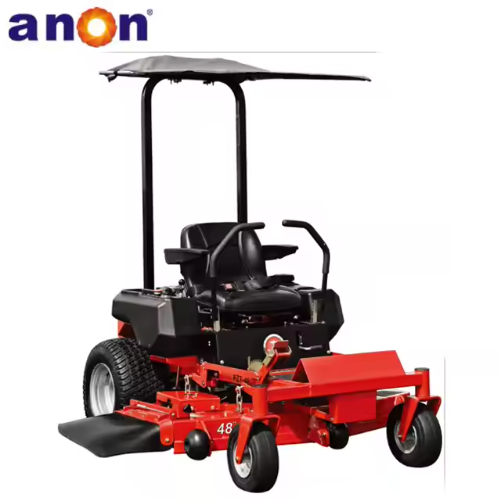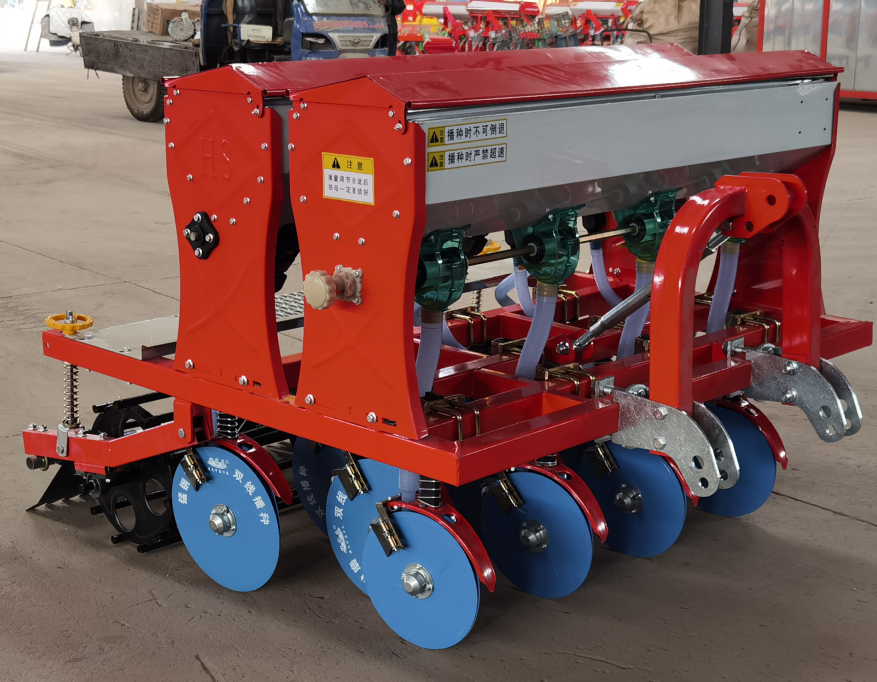
ANON Combined Seeder
A combined seeder is a highly efficient agricultural machine that integrates multiple processes, including furrowing, fertilizing, sowing, covering, and compacting. Combined seeders can be categorized by sowing method, such as pneumatic or mechanical. It is suitable for a wide range of crops, including wheat, corn, soybeans, millet, sorghum, cotton, rapeseed, alfalfa, and rice.
1. The seed box is not easy to get stuck or leak seeds, ensuring the quality of sowing.
2. The V-shaped crate is easy to clean, preventing seed clogging after sowing.
3. Compact and durable structure.
4. It can operate efficiently on sloped and rough terrain.
5. High sowing efficiency and accurate sowing.
6. Simple operation, multi-functions in one machine, and a high degree of automation.
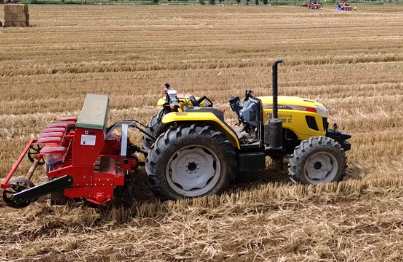
Integrated Operation
ANON combined seeder can handle many tasks in one time, including land preparing, ditching, seeding, fertilizing, covering and so on. So it can reduce your use of tractor. Because in the traditional sowing, you need a tractor to tow agricultural tools with different functions to planting, such as rotary tillage, sowing, fertilization, etc. Tractors will repeatedly crush your land, which can easily cause soil compaction. The combined seeder can finish these work in one go. The soil compacting rate will reduce 30-50%. Especially during the spring and autumn sowing season when you need to rush for farming time, the combined seeder can save you the most sowing time and cost.
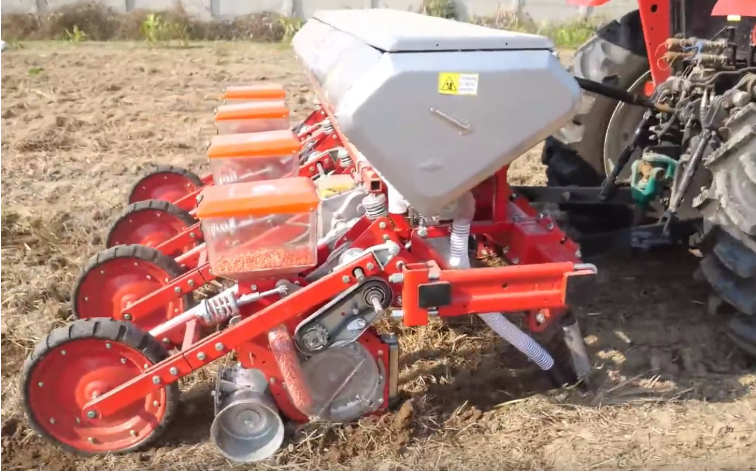
Precision Sowing
ANON combined seeder has a precision metering mechanism that can achieve accurate metering and distribution of the planting amount on the soil. It has high sowing accuracy, adjustable plant spacing, row spacing and sowing depth, and uniform seedling emergence. Using our combined seeder can improve your seeding quality and save seeds. Good sowing uniformity and consistent sowing depth make the seedlings neat and uniform, with good quality, laying a solid foundation for high yield.
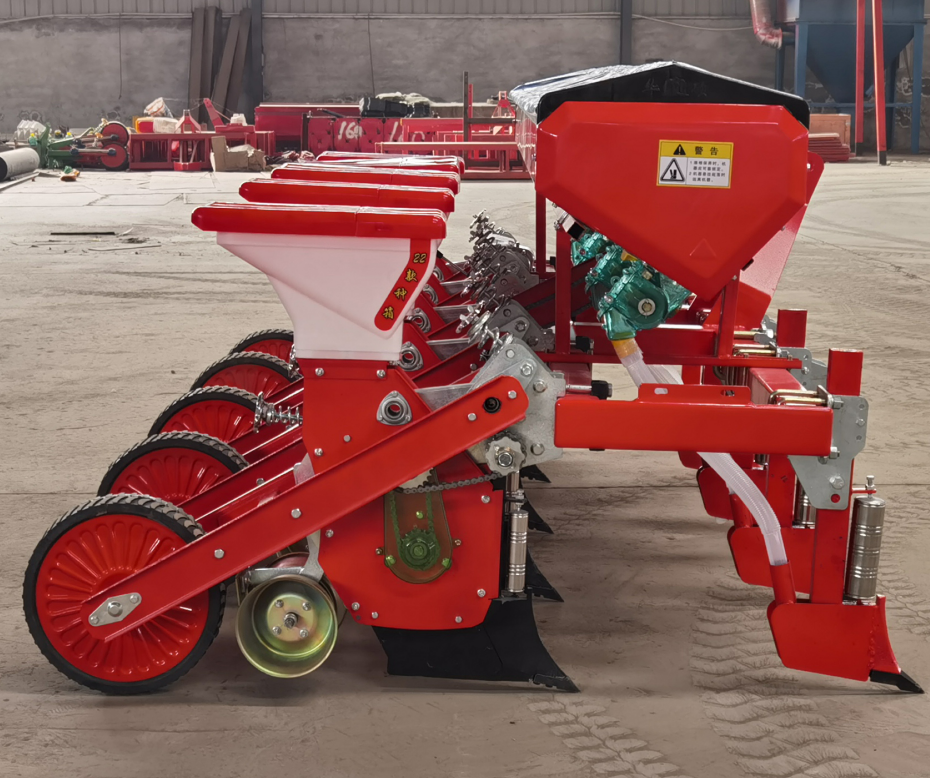
Seed and Fertilizer Separation
The combined seeder uses the method of separating seed and fertilizer, which can avoid burning seedling. It has an independent seed fertilizer transport channel and uses side deep fertilization technology. The fertilizer can be applied 5-8cm below the seed side, which can ensure that the seedling roots can absorb nutrients and avoid direct contact with the seeds, resulting in seedling burning. The fertilizer utilization rate is increased by 15% -20%.
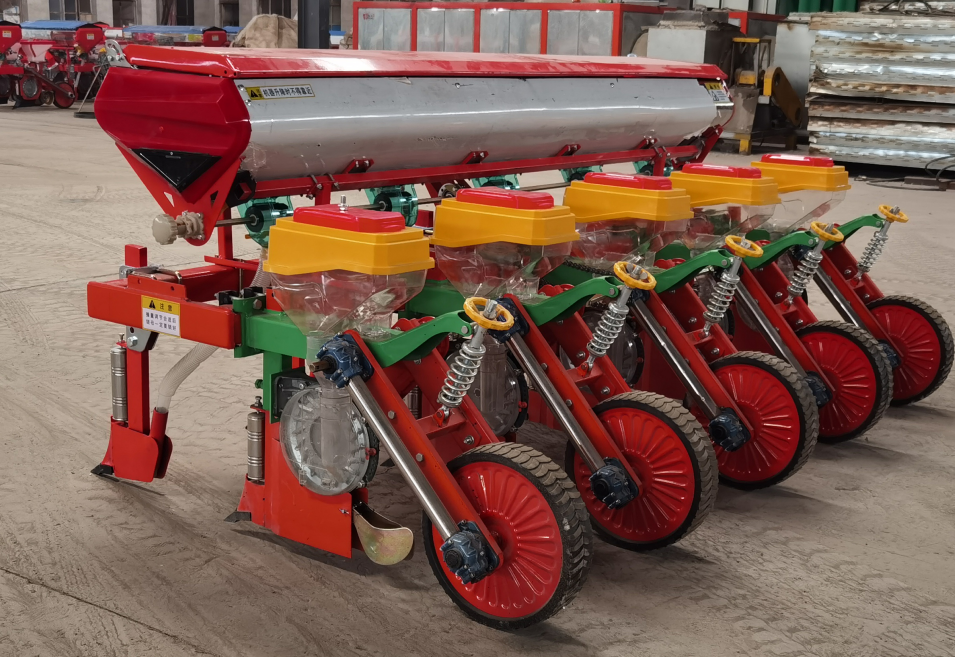
Protect Arable Land
We also have no tillage combined seeders that can achieve minimal tillage. It can realize low soil invasion, reduce soil disturbance, and protect organic matter and plant residues. It can reduce the number of tillage and preserve surface straw cover.This can help protect soil compaction and reduce the soil moisture evaporation. Planting seeds on uncultivated soil helps retain soil moisture.
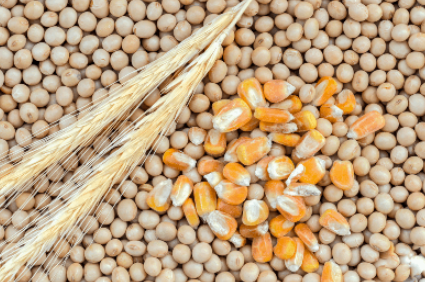
Balance Different Land and Crops
If you want to sow different crops, the combined seeder can definitely meet your needs. It can realize this strong function through changing seeding disk and adjust the row spacing and you can sow wheat, corn , soybean and so on. So you don’t need to buy another seeder especially. One machine can meet your different sowing requirements.
For different terrains,we also have corresponding models for you to choose from. If you are in the plain, you can use our large combined seeder. It is more efficient and can finish you sowing task in short time. If you are in the hilly region, our small and light weight model has a more narrow body and more flexible turning. It can perfect adapt the small areas, steep slopes and ridges in the fields.
Advantages
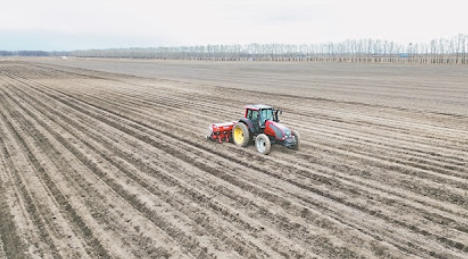

FAQ
The required tractor power is related to the width of the seeder. Generally speaking, a seeder with a 2-3 meter width is suitable for a 30-50 horsepower tractor; a 4-6 meter width is suitable for a 50-100 horsepower tractor; and wider widths require a tractor with 100 horsepower or more. Please refer to the equipment manual for specific matching recommendations.
Cleaning: After daily use, you should thoroughly clean the seed and fertilizer boxes to prevent fertilizer residue from corroding the boxes. You can use a high-pressure water jet to rinse the machine, especially any dirt on the tiller and furrow opener, but be careful to avoid electrical components like the motor and display. Finally, clean any remaining seeds in the seed meter to prevent mold and clogging.
Inspection and Repair: Check the tiller blades for wear. If the blade wear exceeds 1 cm, replace them. Regularly check the seed meter and seed guide for cracks and repair or replace them promptly. If any rotating parts, such as bearings and chains, make any unusual noises or sticking, lubricate them with lubricant.
Rust Prevention: Apply rust-proof oil to metal parts, such as the furrow opener and pressure roller, to prevent rusting from rain. If storing for long periods of time, such as between autumn harvest and spring planting, lift the machine off the ground to prevent the tires from prolonged pressure and deformation.
Storage: Store in a dry, ventilated shed, away from exposure to rain. If stored outdoors, cover with a waterproof sheet and place wooden boards underneath to prevent moisture.
If you’re considering purchasing your own combine seeder, consider the following:
First, tillage System. Do you use no-till? If so, a no-till seeder is essential. If you prefer plowing, a combine seeder with rotary tillage is recommended.
Second, Crops. Are you planting corn, soybeans, or wheat? Different crops require different seeders, such as air-suction for precision seeding corn and grooved-wheel for strip seeding wheat. You can choose several different seeders to meet your different seeding needs.
Third, Land Size and Tractor Horsepower. The larger the land, the wider the seeding tractor needs, and the higher the tractor’s traction and power output requirements.
Fourth, Price. No-till and air-suction seeders generally require more technology and are more expensive.
Common causes include impurities in the seed/fertilizer, excessive soil moisture resulting in weeds, worn openers, or a detached seed tube. Clear the blockage and resolve the cause before resuming operation.

